written by Laurie Tom
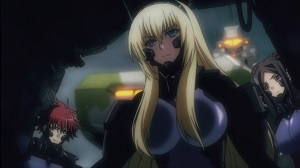
Schwarzesmarken takes place in East Germany in an alternate 1983 where aliens have landed and are slowly taking over the planet in a torturous land battle. The aliens do not appear to be particularly intelligent, content to win battles through sheer numbers, but since they cannot be reasoned with, humans have no choice but to fight.
Though the aliens can be slain with conventional weapons, mecha are particularly useful for taking out the living alien artillery, and the 666th squadron, nicknamed Schwarzesmarken, is East Germany’s best unit.
Though the series did not immediately grab me, the opening episode had enough potential that I decided to come back, and it grew on me more than I thought it would.
First of all, the show had several things working against it. 1) It’s a prequel to Muv-luv Alternative, which is a series I’ve passed on watching because it’s based on a visual novel with dating elements aimed at heterosexual men. 2) It has a predominantly female cast, which in anime doesn’t necessary mean they’re looking to expand the female audience as much as to provide fanservice. 3) I was afraid it would end up being a harem anime where the “luckless” male protagonist would end up with the affections of multiple women.
Fortunately, it’s not as bad as that. Even though it is a prequel, it’s watchable on its own with the understanding that the aliens will not be defeated by the end of the show. The female cast is varied enough that members of the main 666th squadron don’t get mistaken for each other (and there are women in incidental roles outside the squadron, including a middle aged woman in charge of a military base). The outfits are fanservicey, but there are few butt shots, outside of when one sleazebag male commander is around (presumably his POV) and he’s not in every episode.
But best of all, main character Theodor is a complicated protagonist. He might not have much luck, but he’s not hapless. As a teenager Theodor and his family tried to flee East Germany only to be captured by the Stasi, who were historically among the most effective secret police forces in existence.
His family’s capture, murder, and the fact he sold them out during his own torture, weighs on him. Though he’s now a soldier for East Germany and scarcely believes in the party line, he’s afraid of taking any steps towards freedom because he knows what that costs. The way to survive is to keep one’s head low and just do the job.
That begins to change with the arrival of Katia Waldheim, a defector from West Germany with an idealistic hope that both Germanys can work together again. Furthermore, Theodor learns that Irisdina Bernhard, his commanding officer, is not the Stasi informant that he thought she was, and in fact is willing to work against them.
Though this is a mecha anime, a lot of time is spent on political maneuvering between different parties and even within the 666th squadron. Aliens are the outside threat, but they are not the only one, and possibly not even the most dangerous one. What’s guaranteed though is that every episode will have a mecha battle, and the marvelous thing is that each of the battles feels like it earns its place in the story. The battles are never filler.
That said, there are some questionable decisions made throughout the series considering that East Germany’s very existence is at stake. (Poland isn’t a country anymore, it’s fallen to the aliens.) Cynics might feel unsurprised that when the country needs unity the most is when it’s least able to come together, but considering how remorseless the aliens are, I can’t help wondering if the human antagonists really think it’s worth winning a battle if they lose the war.
The body count is on the high side and the show doesn’t shirk from showing violent deaths, though most are concentrated towards the beginning and the end. There is some censorship of the graphically worst death (to an alien), but bullet and shrapnel wounds remain visible and people end up bleeding a lot.
One thing I do want to mention though, because it’s a trope I usually try to avoid, is that Schwarzesmarken seems to have this weird little sister attraction going on, both with Theodor’s younger (not blood-related) sister and another character who explicitly reminds him of his little sister. Theodor himself doesn’t seem to be interested in that train, but the writers have no problem putting him on board, and in the case of his adoptive sister, saying that the situation gets messy is an understatement.
Since this is a prequel I’ll note that the ending does not resolve the alien problem, but it otherwise comes together and all the plot threats as relevant to the characters involved are tied off.
Overall I think this is one of the better mecha series I’ve watched and if one is not immediately dissuaded by what may well be one of the world’s creepiest little sister characters, it’s worth checking out for the well scripted battles and the unusual setting.
Number of Episodes: 12
Pluses: unusual period setting of communist 1980s East Germany, complicated worldview with few good answers, Theodor is an unusually damaged protagonist for anime making him a welcome change of pace
Minuses: spray-on bodysuits, even though the characters are mostly German they often behave in a culturally Japanese fashion, and what is with the little sister fetish?
Schwarzesmarken is currently streaming at Crunchyroll and is available subtitled. Sentai Filmworks has licensed this for eventual retail distribution in the US.

Laurie Tom is a fantasy and science fiction writer based in southern California. Since she was a kid she has considered books, video games, and anime in roughly equal portions to be her primary source of entertainment. Laurie is a previous grand prize winner of Writers of the Future and since then her work has been published in Galaxy’s Edge, Strange Horizons, and the Year’s Best YA Speculative Fiction.

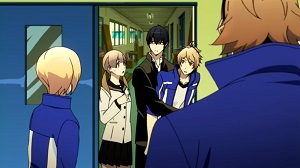 Out of all sports anime I could have watched as my first, I picked Prince of Stride: Alternative because I was a track and field athlete in high school, and the idea of a parkour/relay race would totally have been up my alley.
Out of all sports anime I could have watched as my first, I picked Prince of Stride: Alternative because I was a track and field athlete in high school, and the idea of a parkour/relay race would totally have been up my alley.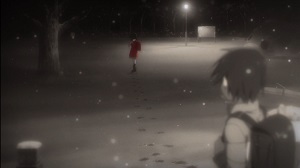
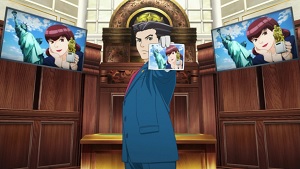
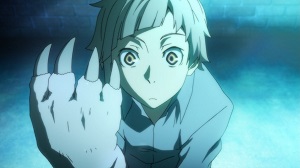

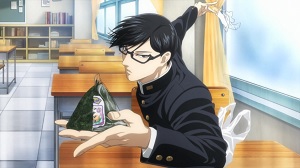
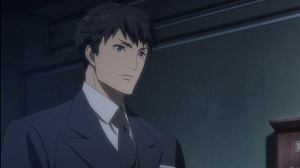


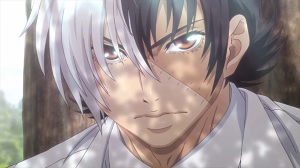 Let’s start from the beginning with this one. Black Jack was an extremely popular manga that ran from the early 1970s to the early 1980s written and illustrated by legendary manga creator Osamu Tezuka (best known in the US for Astro Boy and Kimba the White Lion).
Let’s start from the beginning with this one. Black Jack was an extremely popular manga that ran from the early 1970s to the early 1980s written and illustrated by legendary manga creator Osamu Tezuka (best known in the US for Astro Boy and Kimba the White Lion).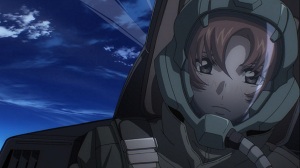 Fafner: Exodus is a series made for the hardcore fan. It’s a sequel to the 2004 Fafner: Dead Aggressor TV series and 2010 Fafner: Heaven and Earth movie, both of which have made it to the US, and also makes nods to the direct to video prequel Fafner: Right of Left, which did not make it to English language audiences. As such, this review will contain spoilers for previous entries.
Fafner: Exodus is a series made for the hardcore fan. It’s a sequel to the 2004 Fafner: Dead Aggressor TV series and 2010 Fafner: Heaven and Earth movie, both of which have made it to the US, and also makes nods to the direct to video prequel Fafner: Right of Left, which did not make it to English language audiences. As such, this review will contain spoilers for previous entries.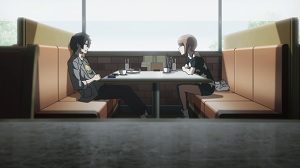

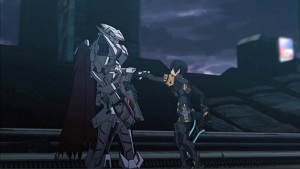

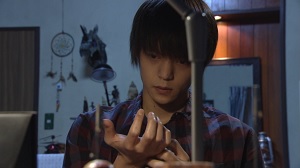 Death Note is the story about Light Yagami, who discovers a notebook (the titular Death Note) that allows him to kill anyone just by writing their name inside it. It originated as a popular manga series that has been translated thus far into an anime, a series of live-action movies, and even a stage musical.
Death Note is the story about Light Yagami, who discovers a notebook (the titular Death Note) that allows him to kill anyone just by writing their name inside it. It originated as a popular manga series that has been translated thus far into an anime, a series of live-action movies, and even a stage musical.